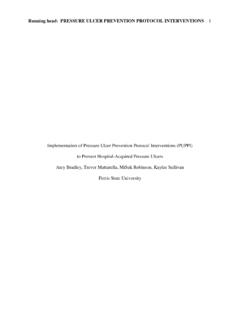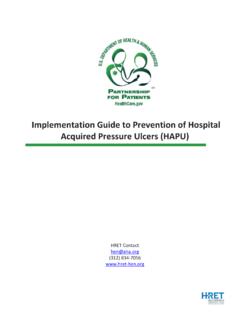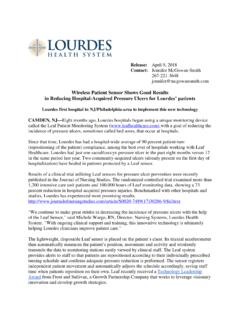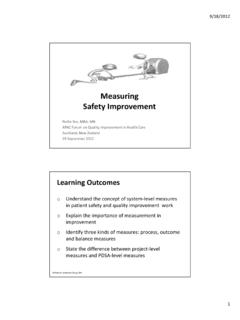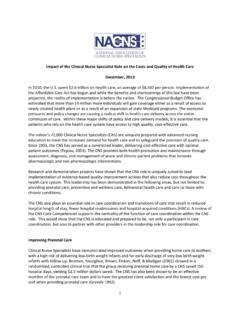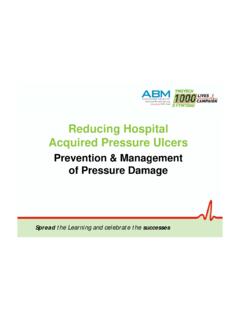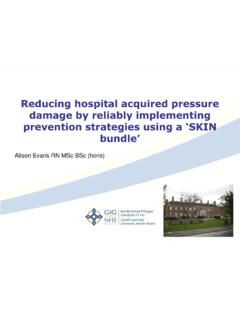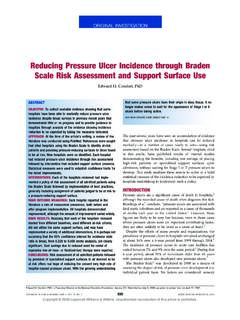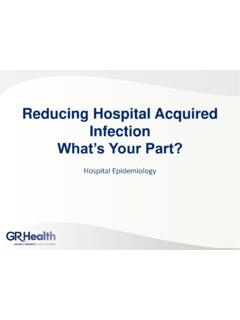Transcription of Reducing the Incidence of Hospital Acquired …
1 Reducing the Incidence of Hospital Acquired pressure injuries related to CPAP/BiPAP Masks Linda Arundel MSN, RN, CWOCN Inova Fair Oaks Hospital Fairfax, Virginia Clinical Purpose/Rationale In the fourth quarter 2016, the critical care unit at Inova Fair Oaks Hospital observed an increased number of facial pressure injuries in patients using continuous or intermittent CPAP/BiPAP masks. For patients in the critical care unit, the delivery of high pressurized oxygen and comorbidities place them at risk for pressure injury development. Objective To reduce the number of patients with Hospital Acquired pressure injuries resulting from the use of CPAP/BiPAP therapy. Methodology An interdisciplinary team was created to evaluate the current state and to implement strategies for improvement.
2 The team developed a standard work for patient management and a daily key process indicator. Outcomes were evaluated. The respiratory staff provided nurse training on initiating standby mode and mask removal to allow for facial skin assessments. For blanchable redness, the nurse applied thin foam under the mask. A new CPAP/BiPAP mask with an over the nose mask cushion and an alternative under the nose mask cushion was trialed. A debrief tool was developed for use when a patient was identified with evidence of facial skin breakdown. Discussion An improvement in the consistency of every four hour facial assessments, early intervention and the use of a new mask has led to a decrease in the progression of the blanchable redness to stageable pressure injuries related to a medical device.
3 As a result, patients experience less pain and suffering related to CPAP/BiPAP mask associated Hospital Acquired pressure injuries . There were four mask related pressure injuries in 2016. Since implementation of a new standard work, there has been one pressure injury as of June 2017 and this was identified in January 2017. References European pressure Ulcer Advisory Panel, National pressure Ulcer Advisory Panel, & Pan Pacific pressure Injury Alliance. (2014). Interventions for prevention and treatment of pressure ulcers. In: Prevention and treatment of pressure ulcers: A clinical practice guideline. Retrieved from National Guideline Clearinghouse. Agency for Healthcare Research and Quality: Gordon, M.
4 (2015). Nursing and respiratory collaboration prevents bipap- related pressure ulcers. Journal of pediatric Nursing, 30, 620-623. Wound, Ostomy and Continence Nurses Society. (2016). Guideline for prevention and management of pressure ulcers ( injuries ). Retrieved from National Guideline Clearinghouse Agency for Healthcare Research and Quality.
